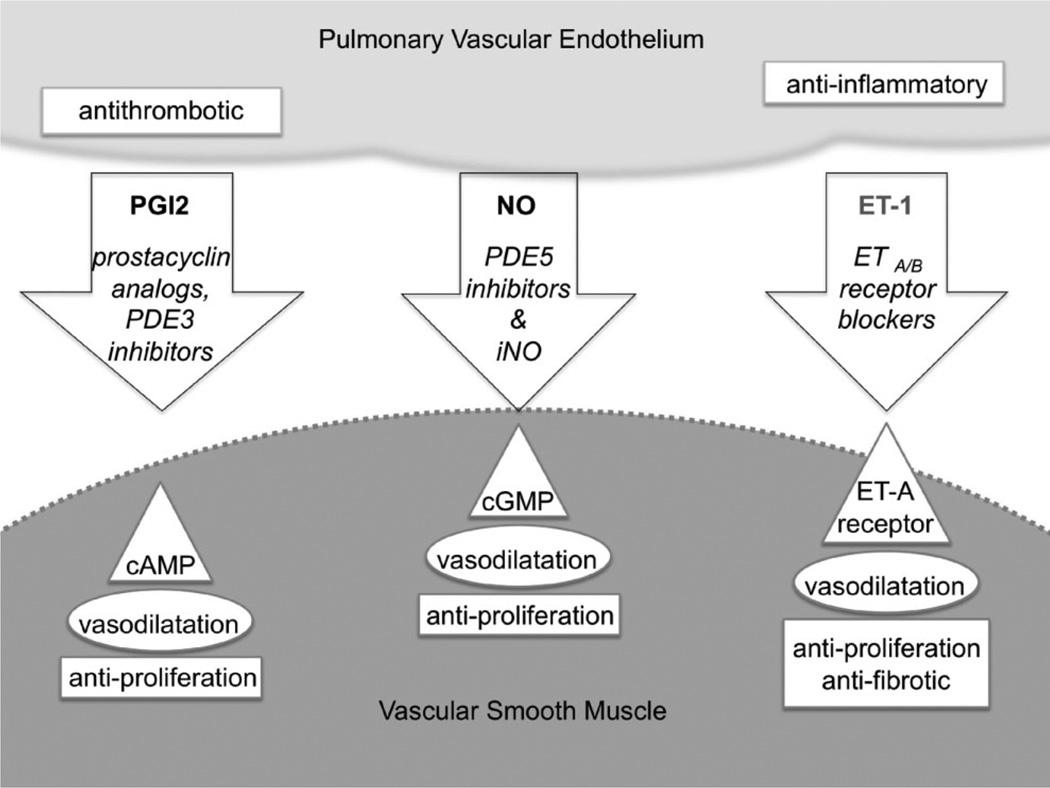Fig. 2.
Pharmacotherapy for pulmonary hypertension. This schematic shows three major strategies (arrows) for both acute contraction state control and chronic remodeling of pulmonary vascular smooth muscle (SMC). All three strategies are derived from natural products of the pulmonary endothelium (PEC) that are shown in bold print at the tops of the arrows. Classes of therapeutic agents are shown in italics in each arrow. Principal molecular targets of each pharmacotherapeutic strategy are shown in triangles, acute effects are shown in ellipses, and subacute and longer term therapeutic consequences are shown in rectangles in either the vascular smooth muscle or pulmonary endothelial target tissues: PGI2, or prostacyclin, is a natural PEC product that relaxes SMC via increases in intracellular cAMP levels. Inhibitors of type 3 phosphodiesterases (PDE3), such as milrinone, stabilize the cAMP concentration; PEC also produce the gasotransmitter nitric oxide (NO) which dilates SMC by boosting cGMP levels, and these levels are buttressed by the PDE5 inhibitors, including sildenafil; The third class of PEC products that has inspired pharmacotherapy for PH is the endothelin receptor blocker group. ET-1 is a vasoconstrictor that is produced by PEC and broad-spectrum blockers of both ETA- and ETB-type receptors, such as bosentan, decrease SMC tone. Figure concept after Humbert et al.86

